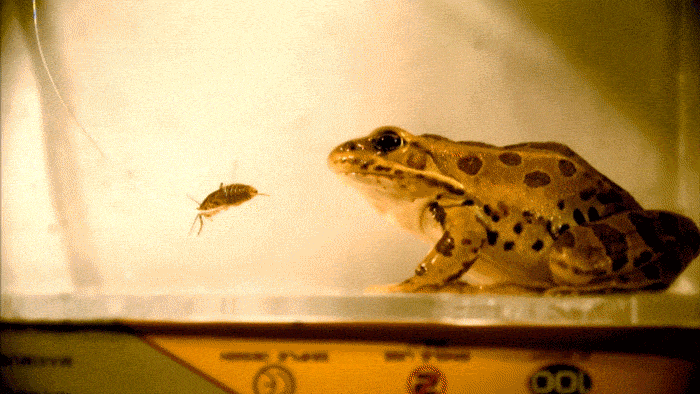New research showed that frog saliva is tailor-made to catch bugs. It’s sticky and perfectly designed to keep frog prey on its tongue and it could lead to creating better adhesives.

Frogs snatch prey out of the air at incredible speeds, hanging on to them with only their tongues. Researchers have been wondering for quite a while how the frog manages to do that without losing hold of the bugs and now they’ve found the answer: it’s a combination of unique reversible saliva in combination with a super soft tongue.
To prove this, researchers from George Tech had to go through a pretty gross process — collecting frog saliva.
“I actually got 15 frogs, and scraped their tongues for a couple of hours one night,” says Alexis Noel, a PhD student at the Georgia Institute of Technology who led the study, “It was pretty disgusting.”
But at the end of the day, it was all worth it. Using high-speed photography and an instrument called a Rheometer to analyze frog saliva, they found that when reaches the prey, the saliva suddenly changes properties. Initially, the saliva is thick like honey, but with the force of impact, it liquefies and spreads over the entire insect. Then, it solidifies again trapping the poor creature so that it can be pulled towards the frog.
A similar phenomenon happens to paint. It’s fairly thick when it’s in the can, but becomes much smoother as you apply it to the brush. Then, as you apply it to the wall (or whatever you’re painting on), it becomes sticky again, sticking to the surface. Unlike water or honey, the paint’s (and the frog’s saliva) changes its viscosity with shear rate. This is what is called a non-Newtonian fluid.
The highly flexible and powerful tongue makes all of this possible.
“The tongue acts like a bungee cord once it latches onto its prey,” Alexis Noel added. “It deforms itself as it pulls back toward the mouth, continually storing the intense applied forces in its stretchy tissue and dissipating them in its internal damping.”

Yet one question still remained — how does the frog take its prey off of the super-sticky tongue? Well, using its eyeballs of course. They force their eyeballs onto their tongue, liquefying the saliva once again.
“They actually bring their eyeballs into their mouth cavity and push down on the insect against the tongue,” Noel says.
David Hu, a professor in the George W. Woodruff School of Mechanical Engineering, is Noel’s advisor. He believes that this frog study could help engineers develop better adhesives.
“Most adhesives that have been created are stiff, especially tape,” said Hu, who is also a faculty member in the School of Biological Sciences. “Frog tongues can attach and reattach with soft, special properties that are extremely stickier than typical materials. Perhaps this technology could be used for new Band-Aids. Or it could be used to create new materials in soft manufacturing.”
The study, “Frogs use a viscoelastic tongue and non-Newtonian saliva to catch prey,” is published in the Journal of the Royal Society Interface.
Was this helpful?



